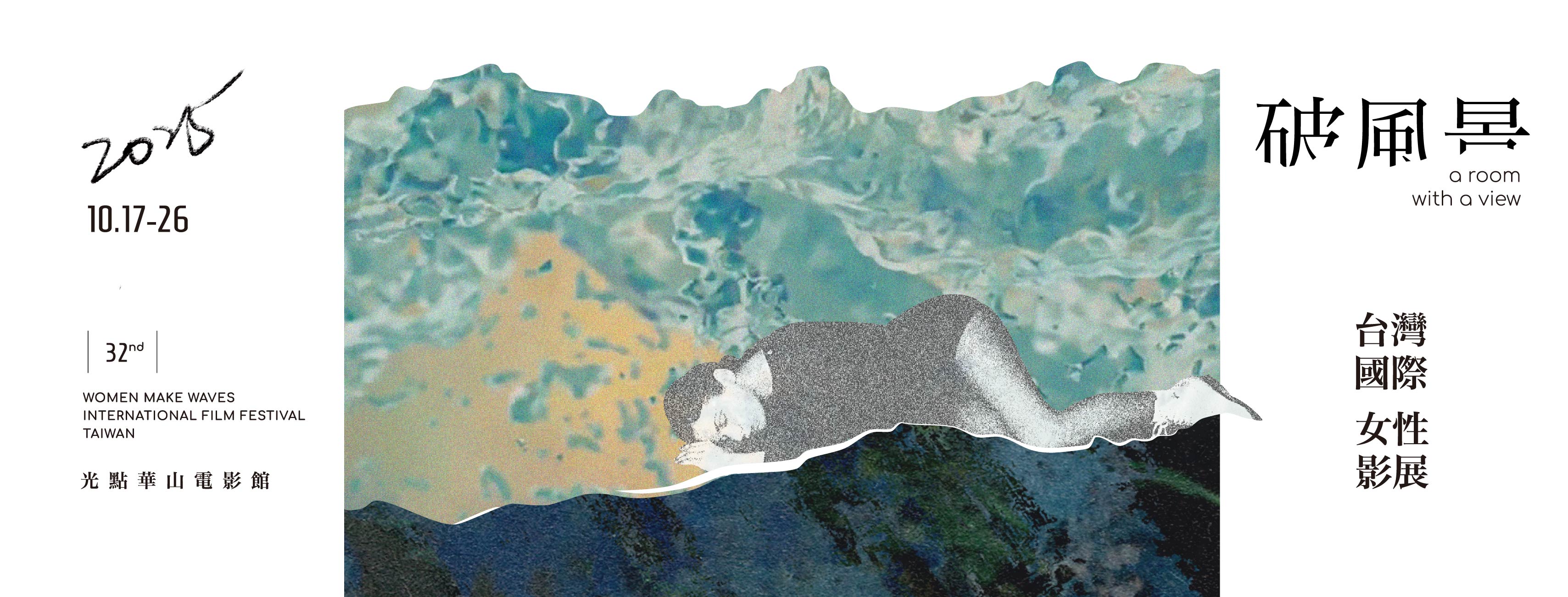

整理、翻譯|陳慧穎 時間|2024年10月19日 Q: 《然而餘音未葬》在題材上十分有意思,將一個傳統的哭喪儀式與其他實踐結合在一起。在台灣,我們也有類似的相關職業叫做孝女白琴,或哭喪女。想先從這部分談起,您是在什麼情況下接觸到巴爾幹地區的這種儀式? 我大概在18歲認識哭喪儀式,但這種在公共場合或葬禮上哭泣的習俗遍佈在歐洲各地,已有長遠歷史。它正逐漸在消失,因為年輕人不再願意學習它。讓我很感興趣的地方在於這個儀式是透過哭泣來助人,讓人們藉此表達哀傷。這並非一種自發性的情感,而是可以學習和排練的。透過重複,它在某種程度上變得更加真實。由於我的背景與戲劇和表演有關,我一直對社會中存在的表演性很感興趣。當時,一家劇院邀請我創作一個關於安蒂岡妮(Antigone)的短劇。安蒂岡妮因試圖悼念她的兄長波呂尼刻斯(Polinycus)而遭受懲罰。即便喪禮被禁止,她還是堅持要舉行喪禮。在公共空間進行,本身就是具有政治意義的。 法國歷史學家Nicole Loraux在其研究中提到,在古希臘,也就是最早的民主政體時期,女性在街頭哀悼是被明令禁止的,原因是這樣做會阻礙男性成為體面公民的契機,情緒上可能會造成影響。因此,他們禁止了這種「照護工作」,把悲傷和哀痛趕回私人空間。這些層面都令我感興趣,不僅關乎集體性的哀悼,也關乎在公共場合哀悼的意義。 為了拍攝這部片,我是和一位來自當地的好友前往巴爾幹半島拍攝。其實,維也納離塞爾維亞、蒙特內哥羅以及片中的鄉村地區不遠。我們遇到的女性,是極少數仍有在進行哭喪的儀式擔當者。這部片拍攝橫跨五年,期間我多次拜訪各地,後來遇見「黑衣女性」(Women In Black)組織,她們運用結合表演的形式進行抗議;還有年輕一代的鋼管舞者Ljubica Duvnjak Đorđevski。這些不同世代人們在做的事情都與哀悼和女性主義有關,跟女性生活在父權社會的狀態有關,也包含身體在公共場域的在場。你在當中可以發現到,作為一種抗議形式是有政治性的。 Q:您剛剛提到這個習俗正在消失,是否可以分享您的觀察? 這個習俗正在消失,因為這些傳統沒有傳承給下一代。在這個社群裡,如果你是一個好的哭喪者,你是相對受到尊重的。但她們自己的女兒卻對此不感興趣,尤其她們無法忍受自己的母親在家裡練習時這樣哭泣。這對她們來說太過沉重,太過悲傷,也不想再與此有任何關連。 其實這個習俗──尤其是在巴爾幹半島──與戰爭息息相關,這些女性至今仍在從事這項工作是有原因的。因為南斯拉夫內戰持續了十年,鄰國之間出於宗教原因互相殘殺。人民失去了許多家人和朋友,生活仍籠罩在死亡陰影之下。某種程度上,她們仍深陷在過去中,不太能適應新的環境。一方面,她們很堅強,能夠承受所有這些痛苦。另一方面,她們很難擺脫哀悼的社會角色。「黑衣女性」組織成員在片中也有提出類似的問題:為何總是女性得承受這些悲傷和痛苦?我覺得答案之一是因為這個社會仍非常父權,尤其是在鄉村偏遠地區。 Q:雖然哭喪女在社群中備受尊敬,但她們也受到禁忌的束縛,如她們不能為自己的丈夫哭泣。 尤莉亞:是的,接近片尾時,有一位婦人Milena Potpara為丈夫進行哀悼。我們見過她丈夫,所以我們其實也很難過。他過世後,我們又去探望了婦人。一年後,就像巨大的痛苦漸漸消退,情緒才得已釋放。 莎拉:我覺得她當時還是不被允許這樣做的。她在丈夫的墓前哭泣更像是一種反抗。當然這並非什麼明目張膽的反抗方式,但她知道自己越界了。 尤莉亞:是的。我們拍攝時,不知道她要這麼做。我們當時只是說要去墓地看看她丈夫,突然間,她就開始哭了起來。那似乎是給予我們的禮物。她吟唱的詞都是即興編造的。我覺得這一點很有趣。Nicole Loraux也曾在研究中提到,在古希臘,女性哀悼聲可以非常大聲,其中可能會間雜批評男人的語句。也就是說女性不僅會讚頌逝者,可能也會第一次公開地說出一些真相。不過我們所遇到的女性都說她們不會這樣做。 Q:我也很好奇「黑衣女性」這個組織。 這是一個遍佈全球的組織。它起源於以色列,1988年第一次巴勒斯坦大起義之後成立,後來在全球各地發展。宗旨就是反戰,女性們會身著黑衣,將抗議行動儀式化。在貝爾格勒會成立這樣的組織,正是為了回應戰爭的爆發。裡面的成員包括了穆斯林、東正教徒和基督徒等等,但她們主要都仍認同自己是南斯拉夫人。 在南斯拉夫尚未解體前,有些蒙特內哥羅人會為了工作遷往南斯拉夫北部,也就是現在的塞爾維亞。因此,現在塞爾維亞有許多蒙特內哥羅人。他們說的語言幾乎相同,只是稱呼不同:克羅埃西亞語、蒙特內哥羅語和塞爾維亞語。如果你想學習這種語言,它的名稱就是波斯尼亞-克羅埃西亞-蒙特內哥羅-塞爾維亞語。這完全是戰爭留下的遺跡,也是為何很多家庭成員會分散在這三個國家的原因。戰後,當今執政的保守派政府不但沒有承擔責任,反而繼續散播各國人民互不寬恕的想法,並假裝戰爭罪行不存在。片中提到的雪布尼查大屠殺──這場奪去約八千名波斯尼亞人性命的種族滅絕──至今仍被許多塞爾維亞人否認。「黑衣女性」組織便是致力於團結這些深受南斯拉夫戰爭之苦的受害女性。有時,光是要述說都很艱難,只能透過歌唱或哀悼來釋放巨大的創傷。 她們的倡議行動還是具有一定的危險性。片中有出現的是蒙特內哥羅第一家婦女庇護所,有些男性、國家主義者會去威脅她們。他們會敲打房子,大聲叫喊。Sabina Talović是一位非常勇敢、堅強的女性。她會走到街上喊回去。兩年前,她被一個約35歲的男性襲擊,送去醫院。但她並沒有因此而停止,反而這給她更多力量繼續抗爭。我從未見過像她這樣用身體對抗歧視的女性。但由此也可以見到,在某些地方,女性敢於做些事情,可能就會遭到極大的仇恨。「黑衣女性」每週都會舉行抗議活動,她們已經堅持了30年。每週五,她們都會去參加抗議。她們已經都是朋友了,作為一個群體也賦予了她們強大的能量。每年會有雪布尼查大屠的紀念活動,而她們每年都參加這個活動。她們會需要警方的全程保護才能到達現場,因為真的會有人去威脅她們,把她們的倡議行動視為讓國家蒙羞的侮辱。 拍攝這部片也讓我反思我的倡議行動是什麼?我要怎麼實踐屬於自己的政治行動?拍這部片有鼓勵到自己。這部片也關乎團結,就像女兒Ljubica對母親的做法有所批評,她或許會採取不同的方式,但她們的主要動機是一致的。當你能夠找到共同點時,即使並非100%同意彼此的看法,事情也能有所推進與改變。 Q:影片開頭提到這部片不能在蒙特內哥羅上映,具體原因是什麼呢? 尤莉亞:如果我們在蒙特內哥羅公開放映這部片,很有可能她們會遭受威脅。我們會在貝爾格勒放映,但絕對不會在蒙特內哥羅放映,因為那裡的社會太過父權。兩年前,蒙特內哥羅有嘗試舉辦第一次同志大遊行,結果參加民眾遭到了國家主義者的毆打。當然,我們都有私下讓這些女性看過這部片,但我們不會公開放映,甚至連讓一些女性和她們家人一起觀影都是有困難的。例如,我們通常會多次前往拍攝,有一次,其中一位女性的丈夫突然改變了主意,第二天我們就去不了了。我們無法見她,也無能為力。很有意思的是,當丈夫在場的時候,你會立刻感覺到。有男人進到房間,氣氛瞬間就改變,所有女性都開始忙著送上喝的。這也是為什麼有時拍攝會很困難,但我們還是想辦法完成拍攝。 莎拉:尤莉亞在蒙特內哥羅拍攝的時候,想要訪問女性經常都得還是得透過男性。如果男人不同意,就拍不了。而且這些女性也不會在鏡頭前說出心裡想的一切。 尤莉亞:她們在鏡頭外什麼都說了。像片頭養了很多羊的女性,她在鏡頭外,就有哭了起來,說我們是她這輩子第一個詢問她意見的人,她因此覺得很感動。 Q:能否也談談您是怎麼決定要分成三個片段? 莎拉:這部片原本是打算拍成一部長片,所以在我加入之前,尤莉亞就已經先剪輯了一版。但我覺得它不夠聚焦,於是說服她改成短片,因此也有了這樣的設定。我想透過三代人的動機和行動,把這三個故事連結起來。 尤莉亞:是的,其實我們認識的過程很有趣。我們是透過朋友Francy Fabritz認識的,也就是《電梯的慾感》的導演。我之前和她合作過另一部片,她是擔任攝影師。這真是太不可思議了,我們三個居然都參加了同一個影展! 莎拉:沒錯,Francy Fabritz聯絡我說有位導演需要剪輯的幫助,我們就這樣認識了。 尤莉亞:找到莎拉後,她決定重新剪輯這部電影,而這正是我當時遇到的難題,畢竟之前已經累積很多故事和素材。由於我們生活在不同的國家,有時我會去柏林和她一起剪輯,有時她會來維也納。 或許我還可以談談影片結尾的配樂。那是一首來自前南斯拉夫的非常古老的流行歌曲,由音樂人Tamara Ristić Kezz重新演繹。有人說這首歌在某種程度上反映了對祖國的熱愛,但也同時為了錢而背叛祖國。這與Ljubica的感受非常相似,她與巴爾幹半島有著很深的感情,包括她自身的身分認同。但另一方面,所有擁有大學學歷的年輕人都選擇離開家鄉,前往其他地方。Tamara是當地一位頗有名氣的DJ和歌手,所以很高興有她的參與,加入比較當代的音樂並與傳統音樂對話。
以女性特質突破,在抗爭裡看見生活──《大風之島》許雅婷導演專訪 ❝在拍《大風之島》時,我一直在尋找的有兩件事,一個是生活,一個是抗爭,二者總是會有交集的。❞ 先與創傷和解,才能拉開一段說故事的距離。──從文集《我所告訴你關於那座山的一切》到紀錄片《雪水消融的季節》羅苡珊專訪 ❝宸君讓他(苡珊)理解創作是一種實踐勝於最終文本上的雕刻,是人需要親自到現場去辯證、與他者產生連結,不去預設最終作品的過程。❞ 走過被婚紗「罩」住的人生,看見永恆缺失的黑洞──《婚.紗.罩》 陳昱伶導演專訪 ❝過去的我總覺得喜歡漂亮婚紗的自己背叛了女性的主體意識,現在才明白,不要被任何框架綁住才是真正的自由。❞ 翻轉凝視權力,看見平等可能──《金魚缸小姐》巫虹儀導演專訪 ❝金魚缸容易被想像成充滿妖嬌誘惑的邪惡產業,巫虹儀的田野經驗卻給出另一個圖像,性工作者的生命處境不浪漫,也不扁平。❞ 每一個人都是獨立的個體,一個人也可以好好長大──《近視》張善淳導演專訪 ❝『未來,我依舊傾向找有耐心溝通的工作人員』,然而無論性別,更重要的是建立溫柔且彼此尊重的工作環境。❞ 掀開女兒心事,讓沉痛記憶騰空而起──《吹得到海風的地方》陳韶君導演專訪 ❝我希望女生可以更自由一點。我們這一代也許有機會過得不同,不要再被困在那些框架裡。❞ 將悲傷的事幽默地講──專訪《跳房子》導演 劉人鳳 ❝她帶著童趣的幽默感,玩起微縮模型追尋記憶中的舊家,坦然面對那個令她感到世界崩塌的一夜,也與觀眾建立了深切連結。❞ 想把事情做好,身份、性別、族群,便不是最重要──專訪《山裡走走》導演全懿儒、製片董妍玫 ❝拍片時我不會想自己是女性或男性,我就是一個導演、或一個副導,就是『懿儒』這一個人。❞ 最好的復仇是愉悅──專訪《風流少女殺人事件》 導演洪瑋婷、攝影鍾艾 ❝風流少女的復仇方式,或許不必充滿仇恨,而是讓觀眾在戲院裡,感受到影像與聲音帶來的刺激,讓壓抑與不平的情緒,轉換成感官震盪。❞ 不斷撕開與癒合,意識自我的身體──專訪《褪皮 以及露出來的》導演林南彤 ❝『是這個誠實帶領我完成一部片』,她坦然分享也認可自己,誠實正視咬指甲這看似渺小的課題,即是最勇敢的展現。❞ 男人消失了,但女人撐起的家並沒有缺陷──專訪《貓與雞》導演朱凱濙、製片沈俞樺 ❝兩個女人相互支持,為何不能是一種相伴、不是一個完整的家?朱凱濙通過作品,重新定義圓滿,單親媽媽與單身女兒,依舊是一個家。❞ 「空間」與「照護」,移工在台灣的故事──專訪《歡迎來到北車大客廳》導演 曾文珍 ❝移工議題在台灣被視為冷門,但正因如此,更需要有人去拍。對曾文珍而言,紀錄片是一個對話的起點、一種行動,甚至能促成改變。❞ 這是一部拍給女生的電影——專訪《草莓蛋糕》導演莊岱雯 ❝母女之間的愛戀、慾望,鮮少被討論,甚至連專有名詞都沒有。『我就很好奇,母親壓抑的慾望,會不會順著血脈出現在女兒身上?』❞ 語言未能傳達的寄託於影像,彼此相伴──專訪《蒸發書簡》導演張若涵 ❝在生活的縫隙中,要怎麼繼續創作下去?好像永遠有個更理想的地方想抵達,但那個理想的地方,又並非單純蒸發去哪就可以完成。❞ 直面創傷記憶的實驗──專訪《萬歲家庭》導演 吳念樺 ❝陰暗的一面,和被社會教育出來的『正常』的我,是很不一樣的。可是我也渴望以這樣的自己,去面對那些我在乎、且在乎我的人。❞ 學會以自己的節奏閃爍──專訪《愛情★星星》導演李姿婷 ❝她仍期待一個更遙遠的未來。也許在三千年後的地球上,人們在意識到性別之前,會先看見『人』本身。❞ 找到故事最佳「發聲」方式,不做不好玩的事──專訪《阿婆非死不可》導演 陳怡蓉 ❝紀錄片教會我如何面對真實,VR讓我學會設計觀眾的觀看位置,而劇情片則是把這些經驗整合起來,專注在角色和戲劇張力。❞ 捕捉童年記憶的風──專訪《風的前奏》導演 黃小珊 ❝製作薩克斯風在外人眼裡的浪漫,對她的家庭來說,代表的是為了讓孩子溫飽,再務實不過的生活與生計。❞
整理、撰文、翻譯|陳以儒、周廷芳 攝影|周廷芳 時間|2024年10月19日 地點|禾苑三井飯店2F Q:請問是什麼啟發你開始關注奧斯汀的性侵案件? 我想從我過去的作品開始說起,這些作品都是以影響力為導向的。我當初開始拍攝電影的原因並不是因為我想拍電影,我從沒上過電影學校,不過我認為我有更多學術的背景,對於各種議題都很關注。我認為電影——尤其是紀錄片,是傳遞知識的最有力工具之一,它能讓人理解或許較為複雜的議題。雖然可能會在新聞中讀到這些議題,但不會真的有所感受。然而當你看一部電影時,你可以真正去感受這些議題,這就是我開始拍攝電影的原因,也是我尋找的電影類型。 因為我先生是美國人,所以我搬到奧斯汀和他居住了一年。我原以為警察會認真對待性侵案件,但當我聽說大多數性侵案件都被駁回時,我既震驚又驚訝,因為我之前完全不知道這個系統有多糟糕。我心想:「為什麼我周圍的人沒有人在討論這個問題?」所以我開始思考我能做些什麼。我使用我所擅長的工具——紀錄片,來提升大眾對於這方面的意識。當我遇到這些女性時,我能看出她們內心有某種火焰。同時我了解到這是一個非常棘手、勝算不大的案件,很好奇她們是否會成功。不過,無論結果如何,這都會是一部強大的影片,因為她們在為非常重要的事物奮鬥,而且我能看出她們不會放棄。這就是我決定製作這部電影的原因。 我在片尾字幕中提到後續的改變。像是 Hannah 在奧斯汀警察局工作,擔任改革性犯罪處理制度的負責人。 她從起訴警察到現在與警察合作,在推動奧斯汀的變革中扮演重要的角色,真的是段很了不起的旅程。對我來說,能夠看到她們的起點,並在影片的最後看到她們走了多遠,是拍攝工作中最具啟發性的部分。對這些女性來說,這場勝訴意義重大,它真的改變了她們許多人。 Q:延續剛剛說的提升意識,請問你希望透過這部紀錄片達到什麼改變或影響? 透過這部紀錄片提升大眾意識是我的其中一個目標,但我也希望這部電影可以為片中女性所用,成為一種工具。她們已經努力了那麼多,一旦這部片完成了,就能再延續她們所做的,例如展示給更多有興趣了解的人看。她們才是真正的專家,不是我。我知道她們希望能有更多案件被起訴,而這類案件並沒有受到優先處理,為此我們需要更多警力、更好的調查、更多經費。除此之外,也需要一位願意和倖存者見面、傾聽她們故事的地區檢察官。過去的案件都是在檢察官與倖存者間沒有任何會面情況下,直接駁回的。現在,這部紀錄片也被運用在奧斯汀與德州的警察訓練,教導如何處理性侵案件。看到這部紀錄片能用於警察訓練,讓他們理解如果做不好會發生什麼,真的很令人欣慰。最終,我希望這部影片能引起更多關注。儘管這場訴訟很大,在美國並未受到足夠的關注,仍有許多人並未聽說過。希望這部電影能讓其他城市的警察和地方檢察官理解到:「這在奧斯汀發生了。他們未認真對待並駁回所有案件,結果被起訴並支付了大量賠償金,所以我們最好先做出改變。」 我希望這部片能促進這樣的改變。 Q:電影中可以看到第一位女性檢察官認為「我們對於被害者負有責任,但我們也需顧及被控者的權益。」請問當時有造成任何社會反彈嗎?人們還在堅持那種「我們會隨便誣陷他們」的想法嗎? 這是個好問題。作為地方檢察官,確實對所有人都有責任,這是職責之一。但是問題在於,政府當時似乎並沒有真正覺得對受害者負有責任,似乎總是傾向相信被告,而不是受害女性。我認為這與社會的思維模式有關,在父權社會中,人們會認為女性這麼做只是為了錢、名聲,或其他利益。我不理解他們為什麼會這麼想,因為向警方通報性侵是一個困難且漫長的過程。而有人說這些通報大多是虛假的,其實並非如此。但很不幸地,我認為這是整個社會看待男女的方式。 Q:在片中,我們看到女性站出來講述她們的經歷,最終卻內化警察的質疑,開始懷疑自己。請問你如何看待這件事? 我覺得她們每一位或多或少都感到某種疑惑或羞恥,會質疑自己:「真的有這麼嚴重嗎?我是否做錯了什麼?我是否應該設法避免這種情況?」我認為這是因為在我們的社會中,羞恥感往往被強加在倖存者身上,而不是加害者身上。我看到越來越多的人在努力改變這種觀念,該感到可恥的不是這些女性,而是性侵者、加害者身上。但這是一種根植於人們心中的想法,對很多人來說難以改變。另外,性侵這種罪行經常與自願的性行為混淆,且很多時候加害者可能是熟人。像 Hannah 談到她的性侵經歷時,曾經懷疑:「那算是性侵嗎?我不確定。」這種疑惑是我從許多人中都聽到過的,他們也會懷疑自己的經歷。我認為既然強加羞恥感在受害者身上是社會的看法,它也會反映在警察、法官和檢察官的行為上,所以社會需要在思維上有所轉變。我認為現在有聽到越來越多情況是,整體思維有在往更好的方向轉變。 還有關於好受害者/壞受害者的討論。這部片不僅僅是某位女性對抗加害者,而是一群女性對抗整個司法體系。她們之間也有「那算是性侵嗎?」,甚至「即便是性侵,我是個合格的受害者嗎?」的自我疑問。這就是為什麼我認為 Marina在片中的在場很重要,她非常清楚自己會被視為一個「壞受害者」,因為她喝酒、深夜外出,還計劃買毒品。但是她非常堅定的認為即便有這些行為,別人也不能因此就侵犯她。所以她毫不掩飾自己是誰、經歷了什麼,從一開始就要求正義。Marina 與 Hannah 形成鮮明的對比,Hannah 相對更猶豫,會想「也許我的情況沒那麼嚴重」。這也反映在她們所經歷的不同類型的性侵上,Hannah 的加害者是她熟識的對象,而 Marina 的加害者則是陌生人。從這幾個案子中,我非常清楚的一點是,無論你是「好受害者」或「壞受害者」,在奧斯汀這個地方都無所謂,因為根本沒有案件會被受理。這正是這個案件要傳達的重點:無論你是什麼樣的女性,遭遇過什麼樣的侵犯,只要你是女性,他們根本不在乎。 Q:片中律師 Jenny 和 Elizabeth 讓對方確信想要讓自己的聲音被聽見,他們所抱持的態度在其中代表什麼意義,請問你的觀察是什麼? 我認為 Jenny 和 Elizabeth 對所有這些女性都扮演了非常重要的角色。當律師們表示「我們相信你,你所經歷的是錯的」時,對這些女性來說是非常有力量的,因為之前沒有人這麼說過。我相信一些女性的確有支持她們的家人或朋友,但律師的支持更不一樣,他們能說:「看這裡出了問題,這不應該是這樣,你不應該經歷這些事。」我想我們大多數人不是律師的人,可能只是會說,「好吧,我想這就是體制的運作方式。我想我們無法改變它。」但 Jenny 和 Elizabeth 真的認為她們能改變這一切。 我知道對於 Hannah 來說,因為她覺得自己的案子不算嚴重,所以不確定自己是否想要參與,並且認為:「既然我的案子沒有那麼強烈,或許還會給其他人帶來負面效果。」她花了很長時間才明白自己的案子有何重要,不過一旦她加入,她成為這個案件中的重要人物。雖然 Hannah 是個注重隱私的人,曾多次告訴我不知道自己是否想要入鏡,但我想她認為這是必要的。她也真的成為案件的發言人,甚至成為其中最為積極試圖改革並創造改變的人。 事實上,這起案件不單單只是關於這些女性的個人經驗,這是集體訴訟,所以攸關每一個人,攸關體制的改變。我相信這對大家來說都是很重要的動機:已發生的這一切,不會只是一個爛事,而是能有機會帶來正向的改變。 Q:請問女性的團結與社群在這個故事中扮演了什麼角色? 我認為這些女性的團結是導致結果成功的主要原因。她們不是一個人對抗,而是一群人,就像一支軍隊。她們一起經歷、一起成長。像是 Marina 和 Hannah 原本並不相識,她們年齡與背景都不同,如果不是因為這個案件,她們不會成為朋友,但她們卻成為了很好的朋友,並為此共同努力。我想展現女性團結起來為她們所相信的事情而戰的力量。另外,作為一個集體,也對於這起案件的成功意義重大,因為參與這樣的事情對心理上來說非常艱辛,需要不斷重述自己的故事。而作為一個團體讓她們可以互相支持、接棒,有喘息的空間,可以更持久的推動案件。 Q:請問 Jenny 與 Elizabeth 的婚禮在片中代表什麼意義? 我在後製時曾與剪輯討論是否要把婚禮的片段放入正片中,因為它與案件沒有直接關係,有些偏題。但我最後還是想把它納入,因為這場婚禮概括了案件的很多內容。Jenny 和 Elizabeth 最終成為了本片的重要角色。Mary Ruth(Amy Smith)試了很長時間都找不到願意接手這個案件的律師,Jenny 在最後決定:「好吧,我來接手。」這個案件很大程度上取決於 Jenny 的意願。而她和 Elizabeth 因為這個案件而相遇並相愛,,這是快樂的時刻。在一部關於性侵犯和強姦的電影中,沒有太多快樂的時刻,所以我想展示她們快樂的時光、慶祝一些美好的事情,我真的很高興我們能把它放進去。 Q:在電影最後,我們可以看到這些女性不僅作為一個團體成長,也各自向前發展。請問這是刻意的選擇嗎? 我想呈現的不僅僅是案件,還有它對她們個人生活的影響,以及她們能或不能做出的選擇。等待的過程是很疲憊的,每天都在等待法院的通知,卻不知道何時會結束。Marina 19歲時被強姦,而案件在她26歲時結束。在她的二十多歲,她看到所有的朋友搬到不同的城市,找到不同的工作,但她卻無法這樣做,她感覺被困住了。案件結束後,Marina 交了男朋友並且搬家,她說,「我終於可以做我想做的事情,我可以享受,我不需要再擔心這個案件。」看到她在如釋重負的快樂,真是太美好了。我覺得參與其中很重要的一部分是,看到每個人的生活如何深受影響,能長時間拍攝並實際見證她們的變化是很令人愉悅的事情。其實這部片的拍攝是很漫長的,這也影響了我的個人生活,因為我每天都不知道會不會接到電話說有事情發生,需要去拍攝。因為我擔任導演、收音,很多都是自己來,所以在這些年製作電影的過程中,我有時也會感到孤獨。當然,我和她們成為了朋友,所以在這方面並不孤獨。但是身為導演,還是有很多事情需要自己決定。像是我與丈夫原本計畫搬回挪威,卻因為案件不斷推遲,而不得不暫緩,這真的影響了我的生活。我和這些女性一樣,當案件結束時感到非常放鬆,因為我不必再時時保持警覺,等待事情的發生。 Q:考慮到美國的司法與檢察系統的複雜性,請問你如何將這些線索拼湊起來,使觀眾理解現實中正在發生什麼事? 我希望確保這對於不熟悉美國系統的觀眾來說是可以理解的,但我也不希望簡化到讓美國觀眾覺得太簡單。我需要足夠的細節,以便使已經了解當地體制的人也感到有趣,這點具有挑戰性。因為案件本身很複雜,導致許多拍攝內容沒有包含在最終的版本當中,我們不得不刪減和簡化部分,這是一個艱難的剪輯過程。 Q:請問你在電影中不得不省略的重要內容是什麼? 法官駁回訴訟的過程,我們實際見證到聯邦法院與州法院不斷的踢皮球,嘗試讓案件拖延下去。我認為警察和檢察官一直在嘗試跟她們作對,讓這些女性放棄、無法再繼續爭取下去。感覺他們只是在玩弄人們的生活,但這些女性這樣做當然不是出自好玩,而是為了其他女性,為了自己,讓事情能告一個段落,這讓我非常生氣。我們無法在電影中包含所有過程,但這件事情是我在製作過程中感到非常沮喪的。我認為那只是一種體制作用的手段,好讓整件事情消失。 Q:「軍隊」(Army)在傳統上是個陽剛的象徵元素,請問你為何會以《An Army of Women》作為你的英文片名? 這個標題源自我與 Jenny 的第一次對話,我問她關於這個案件的事情,以及她決定參與的原因。她說:「對我來說,這個案件最有力道的事情是,有一群女性,像一支女性軍隊般,在背後努力要改變現狀。」她當時便使用了這個詞「an army of women」,描述的不僅是女性原告,還有許多她們的母親、姐妹,以及在奧斯汀為這個改變而努力的倡議者。有這麼多人在運用他們的經驗、能力在努力。她表示這支女性軍隊不會放棄,所以她相信我們能夠成功。 當時我就把這個詞記下來,當作這部電影的工作標題。有很長一段時間,我覺得這個標題與電影並不完全匹配。這是在我與不同女性進行訪談之前,當時我只見了 Marina、Hannah、Jenny 和 Elizabeth,我心想:「那算是一支軍隊嗎?我不知道,就只有四個人。」後來我與其他女性進行訪談,並把這些片段也放進去,我突然感受到這個群體比原先要大很多,不僅只是這些女性或奧斯汀,而是所有人。因此到最後我才覺得這個標題適合了,決定將它做為電影的正式標題。 其實這部片是我做過最艱難的片子,但也是最令人振奮的。因為我實際見證了一群人年復一年在為一件事情奮鬥。這真的很艱難,但他們做到了。我覺得能夠見證這一切,甚至還能有機會帶這部片到世界其他地方,帶到台灣,是一件對我來說非常幸運的事情。
整理、翻譯、撰文|林瑀 攝影|陳以儒 時間|2024年10月22日 地點|禾苑三井飯店 Q1: 片名靈感來自老子《道德經》,與片中不斷出現的自然場景相呼應。您一直對東方哲學感興趣嗎?使用老子金句和水之意象的想法是如何產生? 這幾年我對於東方哲學的興趣愈來愈濃厚。《道德經》對我探討世界與科技的關係影響深遠。我記得第一次閱讀本書是在湖邊,這個巧合加深了我對這本經典的領悟。生活與哲學密不可分,在道家和許多文化中,水象徵陰性特質,我想在生活中發掘這種聯繫。作品中,我以水來表現哲思── 我們生活在更大的宇宙觀中,水為主體象徵我們如水一般流動的生活哲學。人們滋養生命的本能,提醒我們始終與萬物相連,不獨立存在,而是當中的一份子。我希望將此智慧應用於生活,變得更睿智。 創作此片讓我明白,柔和且堅定地傳遞訊息也能展現力量,這點在談論政治時也不例外。老子的哲學提醒我,推動改變有很多種方式,表達觀點不只有一種方法。我會說「天下之至柔,馳騁天下之至堅」的觀點不僅影響了這部電影,也影響了我的生活哲學,連帶我呈現作品給世界的方法也變得不同。 Q2:請說明《至柔至堅》所探討的核心概念。 我的第一部短片作品《親》,探索了酷兒群體的安全空間和家庭選擇。《至柔至堅》作為其第二部曲,我想更深入探討酷兒家庭的概念,從單純尋找家庭,轉向如何滋養和維繫它。我對「滋養、養育」的概念有著濃厚的興趣,這不但促使我創作本片,我也嘗試在影片的日常場景中融入更多哲思。親子教育和養育生命,自然地喚醒了我們對存在、生命和死亡的思考,因此《至柔至堅》讓我跳脫身分框架,以自然萬物為證,探索養育以及關係的更深層意義。 Q3: 您曾提及:「藉由融合不同家庭的故事,我渴望創造一幅能夠展示整個酷兒群體的願景,刻劃出人與人間的緊密連結。」當初此概念是如何形成? 影片中,我刻意模糊家庭間的界線,因為我不想孤立特定的身分或聲音,而希望觀眾將此片視為不同敘事的集合。對我來說,在電影中創造一個「共同空間」至關重要,因為電影製作的本質就是合作,一部電影結合了各種觀點與故事。而當談論到群體和養育孩子時,我希望在作品中凸顯出人與人的連結,因為我們無法獨自養育一個孩子,需仰賴他人支持與共同努力。 Q4: 您曾提及與其他藝術家合作時,您們都嘗試透過創作更接近心目中的「共同世界」,請您描述這個集體願景如何在電影中及電影外體現? 我試圖透過野餐的場景來描繪,我邀請所有演員齊聚一堂,無論他們是否為家長,其一用意是我嘗試模糊生物學上的親子定義,我想強調家長與孩子的聯繫,無關乎血緣與法律定義,只要給予足夠的關愛,任何人都能成為孩子生命中重要的人。孩子是未來,我們可以一起努力培育孩子,不論他們來自哪個家庭,幫助他們成長並分享愛和幸福,如此建立一個理想互助的群體。在新加坡,大多數的酷兒家庭是華人,因為酷兒家庭本身數量較少,且某些宗教限制較嚴格的關係,經濟上更有餘裕也是可能原因之一。因此,我特意邀請來自不同種族背景的人參與影片製作,期待建構一個更具包容性的酷兒空間。 Q5:您是如何與受訪家庭建立信任關係,讓他們願意展示最柔軟與脆弱的部分? 建立信任靠的是誠實溝通,我盡力確保參與者對於拍攝的一切感到舒適。我做的只是去認識他們,取得他們的同意,願意在片中分享某些時刻。因此與其說是捕捉特別脆弱的時刻,不如說是日常生活的紀錄。我認為一開始就向參與者說明清楚很重要,像是電影將在哪裡放映,以及觀眾群是誰。我還讓所有人知道可以隨時退出,並開放對話的空間,將自由和主控權交還給他們,避免他們覺得被束縛或對於出鏡的畫面沒安全感。此外,我會在完成初剪版本後立即分享給他們,確保他們感到安全和滿意,這有助於建立信任,使他們安心分享和表達。 Q6:《至柔至堅》風格柔和、抒情,使人感覺像在觀看一部敘事詩,片中影像似乎埋藏許多隱喻,例如小孩玩黏土或是與手中的蝸牛玩樂的片段。 玩黏土是一個具有象徵意義的安排,與聖經中上帝用泥土塑造人類的形象相呼應,表達家長對孩子的引導和塑造。我希望將這個想法具象化,展現父母如何使用簡單的材料,教導孩子探索並塑造自己的世界。這個活動不僅反映了日常生活,還涉及更深層的親職哲學。這個共同體驗,讓孩子能用自己的方式探索並理解世界。 關於蝸牛的場景,我認為人類身為動物,必需要了解到,我們與其他的生物並無不同,人類以外的任何生命都值得被仔細呵護。影片安排其他生物的出現,讓我們能夠體會到與自然界的本能連結。我深受蝸牛吸引,因為它們緩慢且脆弱的動態使他們更容易被鏡頭捕捉,同時增添有趣的視角。蝸牛經常喚起童年回憶,我記得小時候會觀察蝸牛的殼,溫柔地和它們相處。蝸牛的脆弱性也突顯出,我們既有毀滅的能力也有呵護的特質。由於移動緩慢,我們常常看到它們被踩扁,我希望通過拍攝,能反思這種二元性:我們擁有傷害的力量,但也可以選擇保護和滋養。 Q7:影片中有許多與食物相關的場景,包含準備、用餐和分食,您希望傳達什麼訊息呢? 設計食物場景時,我考量的不僅是物質上的滋養,還有希望傳達群體與文化建立的過程。分享食物是建立情誼的重要方式,許多亞洲文化會透過準備和享用食物來表達愛,我希望在影片中展現這種情感。而餐桌上的菜餚我特意選用傳統的產後月子餐,以此來展現對經歷過生產的伴侶表現關懷。我以新加坡內不同種族的傳統食物,象徵跨越世代以及背景的共餐同樂時光。 Q8:請您分享新加坡的酷兒家庭運動的現況以及進展。 我認為現在大眾對於酷兒家庭的認識和理解正在增加,人們普遍表達支持,當然仍存在負面聲音。目前報導評論稍微傾向左傾,但支持尚未挺進保守的主流。如果有立法改革的可能,反對勢力肯定會加大抵制力度。不過可以看到這正是未來的發展趨勢。儘管進步並非總是一帆風順,但過去十年,世界變得更加包容,這趨勢在一些亞洲地區尤為明顯。 Q9:《至柔至堅》是您為2024年威尼斯雙年展而創作的作品,請您分享現場收到的有趣回饋。 此次威尼斯雙年展有近300位藝術家收受邀展出,我的作品被安排在展區尾端,但是觀眾仍願意花時間觀影並給予細膩的回饋,這讓我非常感激。最讓我驚訝的回饋是,義大利酷兒家庭所面臨的情境也很類似,他們的家長也面臨著缺乏社會認可的情況。這突顯出進步本身的複雜性,其背後因素遠遠超乎於地區和文化之間的差異性。即使是認知上所謂較開放的西方社會,其運作也比實際上看起來更微妙複雜。除此之外,觀眾的情緒反應也讓我非常感動,雖然我不認為觀眾共感與否是衡量作品好壞的唯一標準,但知道在規模如此大的展覽中,我的作品使觀眾體會到深刻情感,這對我別具意義。 Q10:您從何時開始意識到自己想透過紀錄來創作?又是如何深入投入不同主題? 這個想法很早就出現了,最初是在大學一堂紀錄片實作課程開始的。我的教授是一位戰地攝影師,教學方式非常嚴謹且高強度,他重視報導、散文寫作和紀實故事。當時,我主修國際關係,這門科系給我一種抽象且階層分明的感覺,而打破這個壁壘的正是紀錄工作,它使我將這些宏大的概念與人們的真實經歷聯繫起來。我因此能夠體會人們的困難,而非以冷漠的方式研究政治。這也是我首次意識到,選擇自己有興趣的主題很重要,如此一來,我會對我所報導的故事產生歸屬與責任感。我不想模仿一些記者的做法,進入社區報導時下熱門的話題,然後當新聞熱度過去就離開,這不符合我的價值觀,這也是我開始對新聞界有些抽離的原因。作為藝術家,我擁有更多自由,可以深入挖掘對我有意義的主題。不僅如此,我也感受到在權力結構上存在著矛盾,我主要在美國接受培訓,那裡的報導經常套上西方媒體的濾鏡,譬如,有一次我向美國的一位編輯提案一個關於新加坡酷兒女性的專題,結果遭到拒絕,理由是他們最近剛發表了另一個亞洲國家的相似故事。這樣的反應讓我意識到,我不想被西方媒體的價值觀所限制,擺脫這些框架,我才能夠以自己的方式去紀錄、創作。 Q11:您著重於女性與酷兒身份的表達與探索,作品深入日常並探討新加坡歷史與社會中被忽視的存在。如何在結合多樣主題的同時,還能保有創作脈絡? 我的創作非常依靠直覺及本能,沒有預先設定的路線,而是任作品隨著時間自然地發展。當製作需要花費數月甚至數年的計畫時,我相信使我保持初心的關鍵在於,自由地去探索真正吸引我的事物。創作時,我專注於那些打動我的本質,因為我知道我不但將投入數年去提倡、呈現、保護這個理念以及與之相關的群體。這是一個由使命驅動的熱情、智性上的好奇,以及個人興趣組成的綜合體。我仔細聆聽內在的推動力,因為是它塑造了我的作品。 Q12:請您分享去年開始的共創計畫「亞洲女性主義藝術研究工作室」(AFSAR),以及與這麼多有才華的藝術家合作是什麼樣的體驗? AFSAR既是平台又是社群,我們主要通過Discord交流。以學習小組和頻道為主軸,成員們可以聚焦在特定主題或書籍上,一起學習和討論,輪流發表自己的研究成果。小組學習的方式,使得以往具有挑戰性的理論變得更好消化,難以掌握的概念也變得更好處理。多樣的內容討論,幫助我全方位地建構我的藝術理論世界。我們的Discord充滿了哲思交織有形物質的精彩討論,建構出我們集體研究的變動藍圖。能與這些藝術家合作是非常榮幸的,這樣的經驗不僅刺激思考,和他們相處也充滿意義,最棒的是能稱這些才華洋溢的人為朋友。 目前,我參與了一個研究香港哲學家許煜的學習小組。我們剛研究他的《藝術與宇宙技術》一書,現在正在回顧他早期作品《論中國技術問題》。我目前還加入了一個名為「亞洲為本」的小組,旨在探索亞洲的概念、起源及其演變,並深入研究亞洲未來主義。
整理、翻譯、撰文|葉旖旎 攝影|陳亮穎 時間|2024年10月19日 地點|和苑三井飯店 Q1:《逆風回擊》為您的首部長片,您過去的作品多以世界各地的人權與環境議題為題材,本次為何選擇聚焦此事件? 我過往的工作多與難民問題、離散與環境議題有關。在先前的工作中,我曾遇見到許多受虐待或折磨的受難者。作為女性,如性騷擾等因為性而衍生的負面經驗對我而言我並不陌生,所以對於紀錄、揭露這樣的事件非常感興趣。但對於這部電影,拍攝時我也不知道它最終會變成目前的呈現。 Q2:您是如何結識索菲亞與阿瑪莉亞?是什麼讓您決定深入拍攝她們的故事? 索菲亞在這場#MeToo運動開始前其實已經在社群上發聲過數次:首先是她在Facebook上的一篇貼文,當時她看了一場關於性別暴力的討論,便在社群上提到自己也有過類似的經歷。後來希臘版《Marie Claire》的記者看到貼文後採訪了她,但那篇採訪在希臘並沒有引起太大的關注。 我當時正在研究希臘的性別壓迫議題,在2020年12月,當時#MeToo運動還沒有正式開始時,我和我製片人透過社群媒體聯絡上她,並表示希望能與她聊聊體育界的性暴力問題。隔年1月14日,她在歐洲理事會與希臘體育部共同舉辦的一場線上活動中再次提到自己的遭遇,這就是#MeToo運動在希臘的開端,更多運動員也站出來講述自己的經歷。 我們再次見面的時候,她正準備再去見檢察官。我問她能否隨行,她答應了。當時我也不知道這一切會走向何方。那天早上六點,我到她家拍攝她準備的過程,從一開始我們就有一種非常親密的聯繫。途中她告訴我,有另一位名叫阿瑪莉亞的運動員聯絡了她。阿瑪莉亞在事件發生當時還未成年、法律追訴期尚未過期,她還可以提吿。 阿瑪莉亞也同意索菲亞向檢察官提供她的名字。我開始拍攝索菲亞和阿瑪莉亞的初次對話,雖然當時並不知道會不會用到這些片段。我請索菲亞幫忙聯絡阿瑪莉亞,我們也再次見面。其實我們當時也不知道這個案件會如何發展,也不清楚審判什麼時候會開始。即使索菲亞出面後,希臘的檢察官開始優先處理相關案件,但過仍是非常漫長。 Q3:片中許多情景為在兩位家中拍攝,亦包含家庭成員在面對事件揭露時的角力。本片的拍攝視角相當具私密性、貼近人物日常,請問您是如何建立與被攝者的信任關係時? 拍攝過程中我花了很多時間與他們相處。第一天拍攝時,早上六點到索菲亞家,直到半夜一點才離開,這樣的日子持續了好幾個月,我們的長期相處形成了安全的空間,同時建立了彼此的互信。攝影機的存在變得不是一種威脅,更像是見證者與盟友——正是這樣的信任,讓我得以拍攝那些私密的家庭時刻。 這樣的互動建構了一個有支持性、包容性的環境。與索菲亞初次拍攝時,我們很快就找到了某種默契,相當自然。而關於阿瑪莉亞,我還記得最開始是拍攝阿瑪莉亞和她妹妹一起的場景,那是我們第一次相處。過了一陣子,她也開始習慣了我的存在,習慣了攝影機。漸漸地,拍攝變得稀鬆平常。我想,這一切的關鍵在於,他們知道我不是來傷害他們,或是追逐什麼轟動的場面。 拍攝這部紀錄片時,我的使命感非常強烈。我認為記錄這些時刻至關重要,尤其是那些發生在家庭親密領域中的時刻,因爲許多人都有類似的經驗。像索菲亞與她父親的對話,無論鏡頭裡外,她一遍又一遍地重複訴說,希望得到不同的回應,但遺憾的是,她父親的態度始終仍未改變。影片最後一幕,她在父親膝上哭泣,或許就是她最後一次嘗試與他進行這樣的對話。攝影機如同一種催化劑。它幫助索菲亞去面對父親、與其相處。老實說,很難用言語描述我在拍攝過程中的情感消耗。這三年間我和他們極其親密,拍攝幾乎填滿我的生活。希望我的在場和紀錄至少能讓更多人看見這些創傷,或許會讓人們找到共鳴、不再感到孤單,或者帶來更多思考。 Q4:對於#MeToo受害者而言,揭露事件、面對公眾都需要付出相當大的勇氣,請問您如何理解索菲亞與阿瑪莉亞在片中的自我敘說? 從一開始,我便和她們誠實說明我拍攝的目的和原因,希望她們清楚理解我的出發點,想為她們營造一個安心的空間。過程中我也相當注重她們的期待為何,並讓她們知道我們是在一起面對這段旅程,並在途中觀察事情會如何發展。我們有很多交流,傾聽她們的擔憂、恐懼和期待,而她們的感受亦隨著事情的發展產生變化。 起初本片主要聚焦於索菲亞的故事,探討希臘帆船協會內部的濫權問題,但後來內容有所變動,這對我來說也是相當困難的決定,因為我不希望讓她們失望,心中始終懷著對她們的責任感——我最在乎的始終是她們的感受。在每個拍攝階段,她們都掌握作品的發展走向。最後我給她們看了終版,並表示:「如果有任何片段你們不想留下,我們就刪掉它。」這是我始終堅持的原則,參與拍攝的每位成員也都理解這一點。 Q5:片中的法庭戲使用了黑白動畫呈現,為何選擇這樣的方式? 因為無法取得法院內的拍攝許可,這部分的呈現特別困難,最終我們只被允許錄音。在前兩次開庭中,我們親眼見證了審判的痛苦,也意識到記錄審判實情的重要性。所以我們找來一位素描藝術家,繪畫成為我們唯一能捕捉到那種窒息氛圍的方式。觀眾所看到的法庭場景、聽到的對話——當檢察官揮舞著照片、母親的回應,都是真實的。最後我們整理了數百頁的素寫記錄,並將它們濃縮並形成這些法庭交鋒的關鍵畫面,讓觀眾能夠理解站在法庭上時,面對所有提問的感受和那種氛圍。法庭內的問題在於,暴力以另一種形式持續存在,而這正是受害者所面臨的挑戰。 Q6:片中有許多段落是在往返法庭的車上所拍攝,這樣的「移動」場景是否有特別意涵? 因為需要一次次往返法院,所以片中也展現了我們在城市裡的移動。所有事情都發生在車廂內,宛如一個人的人生在這樣狹窄的空間中被審判。每次進出法院我們都很緊張,對一切都感到懸而未決。像是第一幕,索菲亞進入法院時,天氣陰沈、下著大雨,法庭與希臘國旗在寒冷、灰暗的氛圍下顯得格外沉重,讓人認為是不敢輕易靠近的地方。而到影片的最後,有一幕是阿瑪莉亞自己一個人開車,這也象徵著她的變化。最初由父母陪同,到最後她能夠獨自駕駛——這段經驗使她有所成長,不再需要倚賴父母而能夠自己掌握一切。其中一個我們最喜歡的場景是,她開車時,法院被陽光照亮,彷彿那已成為象徵著勝利的地方。因此,我們還能有一絲希望。 Q7:承上,結尾處阿瑪莉亞提到索菲亞正在「win her life back」,對於受害者而言,您認為「win her life back」的意涵為何?是否也呼應了片名? 我認為索菲亞選擇了正確的航向,在帆船運動中,「tack」表示改變航線,這也是影片標題的由來。當她說出這句話時,對我而言非常感人,所以立刻決定以此作為片名。這部影片的重點不是贏得案件,也不是讓任何人被判有罪,而是捕捉那個瞬間——當一個人決定改變自己人生的方向。這或許無法帶來真正的正義,但我認為重點更在於她勇敢發聲的姿態。 Q8:在紀錄片上映後,國內迴響如何?有收到特別印象深刻的回饋嗎? 觀眾的回饋總是讓人十分觸動。首先大家都非常震驚,無法相信這種事情會發生在自己的國家。這部紀錄片引發了許多相關討論,尤其關於現行還有許多改善空間的司法系統。對於性暴力與虐待的倖存者來說,如果選擇訴諸司法途徑,前方將是一條漫長、充滿創傷且艱難的道路。在片中我並沒有將這個過程美化,而是選擇呈現一個需要長期抗戰、勇於面對的暗黑世界。但同時,你會看到這兩位極其堅強的女性,她們有著追求正義的強韌與力量,這也是這部紀錄片希望帶給全世界觀眾的。
訪談、翻譯、撰文|陳以儒、王佳臻、陳慧穎 攝影|王佳臻 時間|2024年10月27日 地點|華山小客廳 Q:請問您拍攝本片的契機是什麼呢? 最當初,這部短片是源自於我就讀MFA編劇研究所期間撰寫的長片劇本,在校時,我共寫了三部長片,而這是我的畢製作。 故事靈感來源是我想寫一部發生在我成長的家鄉——威斯康辛州拉辛的劇本,以及關於我的菲律賓裔單親母親的故事。關於母女關係的故事某種程度上是源自我的親身經歷,但並非百分之百如此。很多是過往經驗的重演,但也有很大一部分是虛構的。 我對於去描繪某種文化特定性非常感興趣,因為美國中西部的菲律賓移民社群,跟其他地方的菲律賓移民社群很不一樣,甚至相較在菲律賓的原生社群更能觀察到那狀態。 我想展示其中的細微面貌,特別是社會經濟、階級的動態關係,如何在非常富有的派對女主人Mercedes和她交友圈,以及第一次參與派對的Annette之間展現出來。Annette從事管家工作,並不富有,可以在片中看到她試圖融入的尷尬,然而她們身上又都保有同源的文化與種族身分,儘管存在著社經地位的巨大鴻溝,她們仍試圖找到友誼。我認為在菲律賓移民社群中非常具普世性,也是我在兒時便察覺到的面向是:階級動態。這觀察也成為這部片的靈感之一。 最一開始的研究,主要處理的是許多自身經驗與個人記憶。然而,我在選角的環節接觸到很多原生或移民菲律賓人,或二代移民等,我們舉行了非常多工作坊與排練,討論各自的成長經歷、經驗的異同,並分享各自的視角。我從他們的分享也找到了許多靈感,因此與演員的合作狀態也成為研究過程中很重要的一部分。我們邀請他們分享故事、記憶、直覺等等,繼而融進劇本中,於是演員們也參與且負責發展自身角色的過程。我給予他們一個大框架與基礎,但其實是他們賦予了這些角色更為立體的樣貌。 Q:電影中出現特定物件的特寫鏡頭,例如女主人的珍珠項鍊、口紅、家中室內裝潢等等,從中可觀察到母親Annette雖然不屬於較高的社經階層,但她真的很想要融入,可以再多談談關於這個母親角色設定與背景嗎? 在長片劇本中,Annette與女主人Mercedes在派對不久前,才剛在教堂裡認識,對彼此都還不太熟悉。Annette剛從美國東岸紐澤西搬到威斯康辛,再更早之前,她來自菲律賓。但這些細節都是在長片劇本,其實不需要知道這些背景,也能理解這部短片。 但若是說我與這個角色的個人關係⋯⋯我對這種階級動態特別敏感,因為我母親成長在非常貧困的環境中,儘管她努力提升了自己的社經地位,成為一名醫生,也和富裕家庭的學生一起讀書,融入了那個社會,但我總能感受到她並沒有真正覺得自己屬於那裡,就像我們也沒有真正屬於那裡一樣。如果這樣看的話,這也可以說是Annette的背景故事之一。 此外Annette的角色,部分還源自於陪伴我長大的奶媽。她來自非常貧窮的家庭,後來成為我們家的一份子,有時我們會帶著她一起參加許多社交聚會。作為孩子的我觀察到這些階級樣貌與權力動態,其實是很辛苦的,因為我還無法明白我目睹了什麼。我記得我大概是七歲時目睹這一切,當時我感到不適,但不清楚我為何會感到不適,直到後來我才意識到究竟發生了什麼。 而在電影中,Jasmine是15歲,已經長到足以理解的歲數了。Jasmine對於被迫扮演好女孩角色,以取悅母親的朋友,並協助她母親提升社經地位感到十分反感,這是她不願意參與大家的原因,也不信任她們,覺得Mercedes和她朋友們很虛偽。這就是我所希望去描繪的:孩子對於沉迷於炫耀自身社會階級與財富的大人是非常敏感且不信任的。 Q:片中可以看到一方面Annette在炫耀女兒Jasmine,畢竟她擁有好歌喉且能說一口美式英語,但同時也在對話中不斷貶低Jasmine,為何這樣呈現? 我認為Annette對於自己和女兒都是非常嚴格的,此外她也將自己的需求與渴望都放置於女兒的需求與渴望之前。比起她女兒的形象,她更在意自己的形象,更忙於討好Mercedes跟她朋友,甚至不惜犧牲女兒。她因Jasmine感到羞愧,因為Jasmine不會說家鄉的語言,也沒有表現出符合傳統菲律賓價值觀的行為模式。 這某種程度上也是我在成長過程中一直感受到的,我母親期待我表現出特定的樣子,但我並不知道該怎麼做,因為我不是在跟她一樣的成長環境中長大。這是很多菲律賓家庭,甚至是各種不同族裔的美國移民社群,所面對的緊張關係。其中會有一種期望是,孩子對父母而言就是一切,有責任榮耀家庭,並展現家庭的身分與地位。 我不認為Jasmine認同這樣的觀念。不僅僅是因為她不願在母親強迫之下展現自己,實際上她也無法和這些人產生共鳴。他們談論她的方式就彷彿她不在場,彷彿她是隱形的。這種情況在我成長經驗中非常常見:我母親和朋友們談論我時彷彿我不身處同一個房間,被物化的感覺。還是孩子的我,便覺得這非常不尊重人,但沒有人會想到要尊重孩子,重點總是放置在孩子是否尊重長輩、如何尊重長輩。 Q: 片中有一場景是Jasmine遭狗咬傷,這發生的時間點非常微妙,是否能談談這部分? 時間點剛好發生在Annette終於要被這個「家庭」接納的時候。在這部片最一開始的地方,Annette警告Jasmine最好乖乖的。結果Jasmine去弄狗而被咬傷,這當然造成了混亂,毀掉這一切。結果到了片尾,我們看到角色上的翻轉:Annette成為了那個失控,且舉止失禮的人。 Annette怪罪她女兒,但其實正因Annette對待她女兒的方式,才導致Jasmine去找狗玩,可以說是Annette把Jasmine推向狗的,所以某個程度上來說Annette得負起責任。本片最高潮之處,便是我們目前觀察到的一切的累積後果與回應,也是對影片開頭那六十秒母女在車內對話橋段的回應。那種敵意和怨恨在整個派對中被持續壓抑著。在結尾我們看到,讓Mercedes不滿意的是Annette的反應,不是Jasmine被狗咬傷這件事。她從窗戶看到Annette怎麼對待Jasmine,那才是對Annette來說毀滅的時刻,是Annette的所作所為毀了這一切。 另外,我不覺得Jasmine聽到她母親說「不要碰那隻狗」,因為「很危險」時,有真的相信這番話。我記得小時候媽媽曾告訴我她害怕狗,因為在她成長的文化中狗被視為危險的,但在我成長的文化中狗被視為友善的,所以這也是一種文化衝突的展現。 Q:如同在不同文化思維中,狗的意義對於Annette與Jasmine不同,您認為影片開頭關於擦口紅和鎖車門的爭論,也源自不同文化的成長歷程相關嗎? 是的,我認為Annette的視角是非常常見的移民視角:一種生存心態,尤其如果是來自較卑微的成長背景,會有匱乏的心態,選擇用恐懼為導向的方式來面對這個世界,而不是信任和開放的心態。 Annette告訴女兒擦上口紅更好看,我認為這也有很強的文化特性,因為在菲律賓文化中,女性必須以某種方式打扮,才能在公眾面前顯得得體,比如女性化的妝容,穿裙子、塗口紅才像個女人。女性主義的批判性也存在於此。Jasmine很抗拒這些要求,因為她在價值觀不同的環境中成長,女生可以在不化妝、穿褲子的情況下出門,依然看起來「得體」。所以這些都是跟母女間不同成長經驗帶來的文化衝突,包括對於女性化形象、何謂尊重等思想上的意見相左,以及對於危險與安全的認知不同等。 Q:可以聊聊片名「Myself When I Am Real」的意義嗎? 我對於私人/公共領域中個人形象的反差性很感興趣。 有時Annette在外,和其他人在一起,他們不見得有意識到他們被拍攝。他們可能會意識到其他人的觀察,但攝影機的特性——尤其是家庭攝影機的親密性與使用性,導致他們有時不太會意識到自己在被拍攝、觀察、檢視,這件事對於我來說很有趣。 我們可以看到Annette私底下表現出「真實」的自己,在影片的開頭、中間和結尾都可以看。開頭時沒有人在看,因此我們無法看到影像,但能聽到聲音。在中間,我們看到Annette在廁所噴Mercedes的香水、試戴珠寶,想像自己也可以是Mercedes 。結尾時,我們看到她真實的模樣顯現,對著女兒大發脾氣。她以為沒有人在看,我們因此揭示了她們關係的真實樣貌。當沒有人在看時,關起門來呈現出來的樣子,也是這部片想去談論的事情。 Q:可以聊聊片中出現的菲律賓料理嗎? 對我來說,去描繪菲律賓裔美籍社群聚會的文化特定性是非常重要的。無論細節如傳統上會出現在派對裡的特定餐點,使用叉子和湯匙,或戴著鑽石和珍珠、化妝、穿著整齊,卻使用紙巾作為餐巾,邊咀嚼邊聊天,不太在乎餐桌禮儀等。這些小細節幫助我去呈現某種我想去探索的角色:美國中西部的菲律賓移民。有些超級細的細節可能只有菲律賓裔美籍小孩才會意識到,但我覺得這就是我想傳達的東西。我希望去強調這種扮演出來的優雅、奢華與日常生活的真實之間的對比。我希望邀請觀眾去看見表面之下的裂縫,或表演幕後的真實,而餐桌場景的安排能有助於此。 Q:拍攝本片後,你有機會重新審視自己的童年經驗,會因此對這些經歷產生不同看法嗎? 會的,我發現這是一個非常療癒的過程,現在我明白母親之所以如此的原因,透過寫出一部分源自於她模樣的Annette這個角色,我對母親有更多同理。我能理解她思考的方式,能理解她之所以會這麼做的原因。我覺得我現在對於成長經驗中圍繞在我身邊的人們,包括她跟她朋友,都有更多的共感和理解。 在青少年時期,我對他們可能還有些反感,現在的我,可以同理Mercedes,還有其他角色,我愛我所有的角色們。現在我看這一部分是改編自青少年時期的我的Jasmine,現在的我了解到她其實也是被寵壞的小孩。對於很多事情的文化不夠敏感,或是沒有那個語彙、視角,或不夠成熟去駕馭或理解這些複雜而精細運作的社會場合,她怎麼能呢?她就只是一個小孩。 Q:這部片呈現出很具有文化特定性的場景設定,是否也能跟我們分享目前國際觀眾的回饋呢? 就其他場放映經驗來說,我覺得觀眾應該還是能對於故事產生共鳴,根據他們所問的問題,或他們的笑聲或其他一些聲音反應,可以感覺到他們不只是在跟隨故事線,還能產生一些幾乎是普世性的反應,即便不一定是跟親身經驗有關。 不過有其他移民小孩、甚至是非移民出身的美國人,曾告訴我,片中的家庭關係、世代關係與階級動態讓他們感到共鳴,即便這是一部具有文化特定性的作品。 舉例而言,有人在映後跑來跟我說「我是哥倫比亞、奈及利亞混血,裡面描繪的樣子就像是我所經歷的家庭聚會」,或「我是紐約的猶太人,這真的很像感恩節會經歷的情境」,所以無論是從親子關係或是階級關係來看,皆有其普世性意義,但同時也有很亞洲文化的地方,比方說亞洲觀念的孝順、尊重家長、不能無禮、服從和習慣性的自我犧牲等。 但我感到非常開心,這部電影能讓觀眾產生共鳴,尤其是亞洲觀眾、菲律賓觀眾。對我而言,在我成長過程中,我從來都沒有覺得自己找到屬於自己的社群,因為我的多元種族背景、二代移民的身分,因為我在語言上不夠流利,我從未覺得自己「夠菲律賓」,我也從未真正地「完全美國化」,好像處於「第三種文化」,無法完全融入其中一邊。因此,拍這部片非常有意義的一件事是,透過這部片,我感覺自己創作出一些什麼,一個社群,而我能感到有所歸屬。 我希望大家能從中找到共鳴,而我在我所經歷的這一切中不是孤單的。因為我有很長一段時間感到非常孤單,而在美國的菲律賓移民文化中,即便是移民二代也可能複製同樣的社會經濟階級動態,即便是我這一代,離散社群的小孩也會再製看似過時且毫無關聯性,卻是一樣具壓迫性的階級樣貌。這也是為何我會說,透過編寫這部片,我可以更加同理Annette這個角色,因為我也經歷了同樣的情境:即便在今天,從外人的視角一看,就是一個享有特權,在美國出生長大,多種語言交雜使用的千禧世代。即便可能菲律賓人或亞洲人可以同理更多,但你不需要是菲律賓籍才能跟這些角色產生共感, 我很高興這部片能產生共感,因為不僅僅是我自己的經驗,更是普世性的經驗。而能分享是喜悅的。